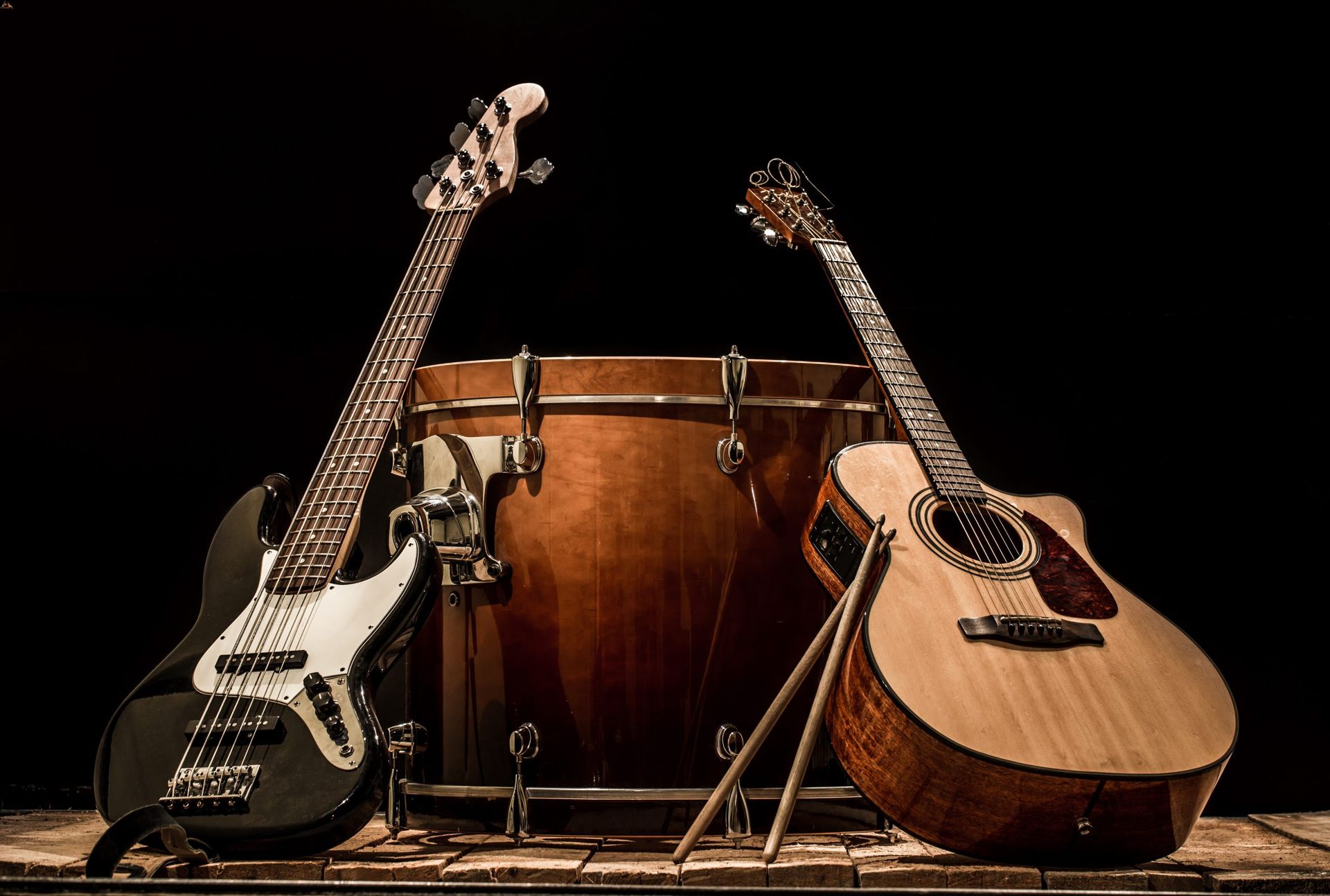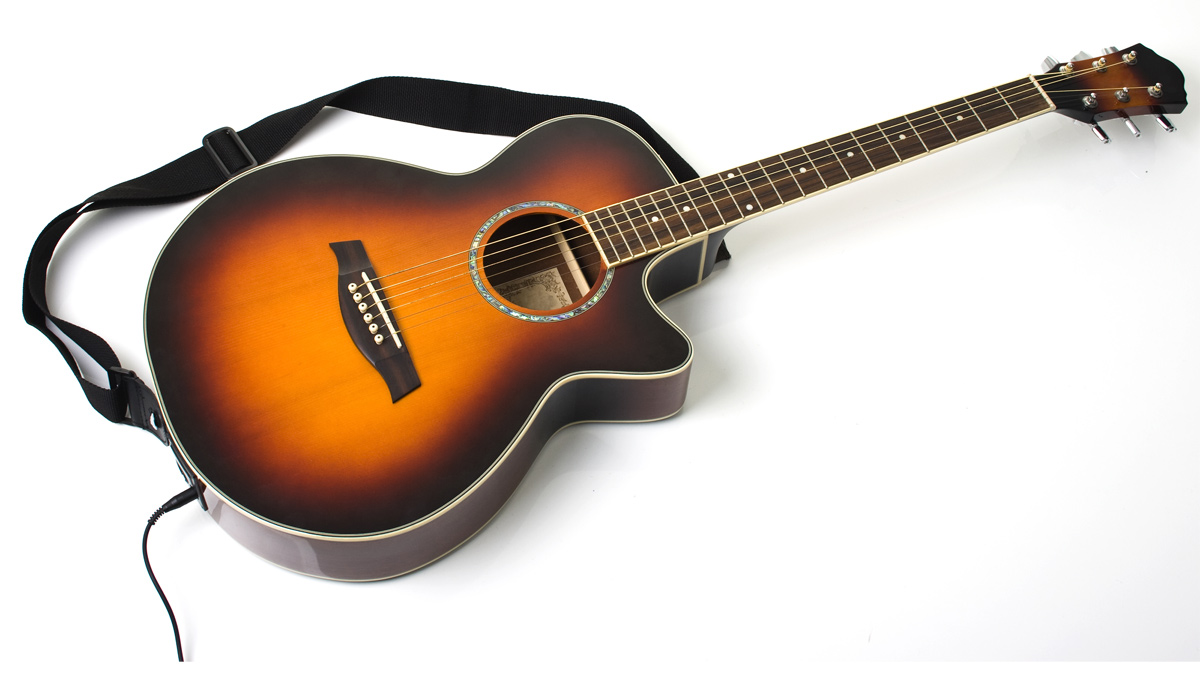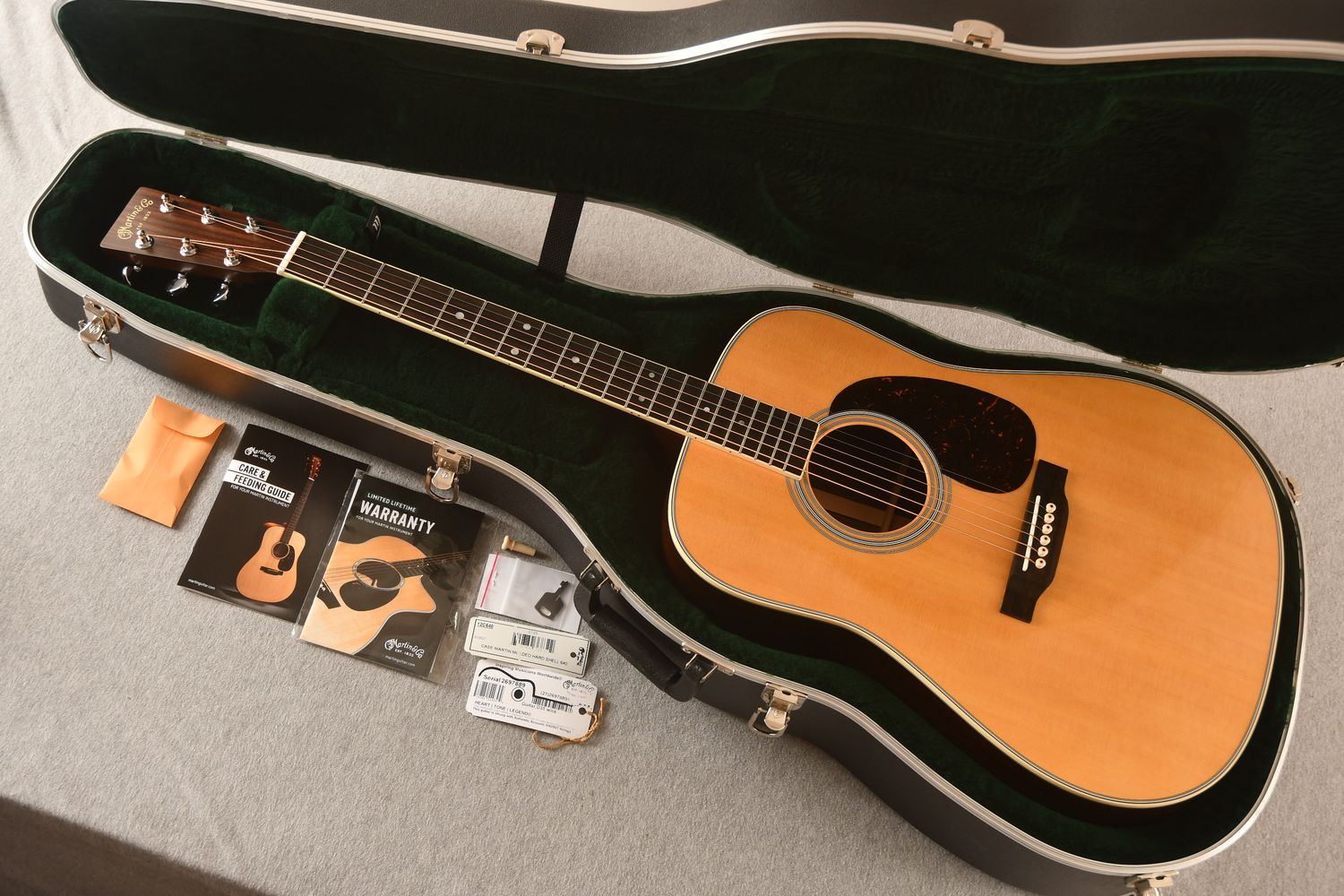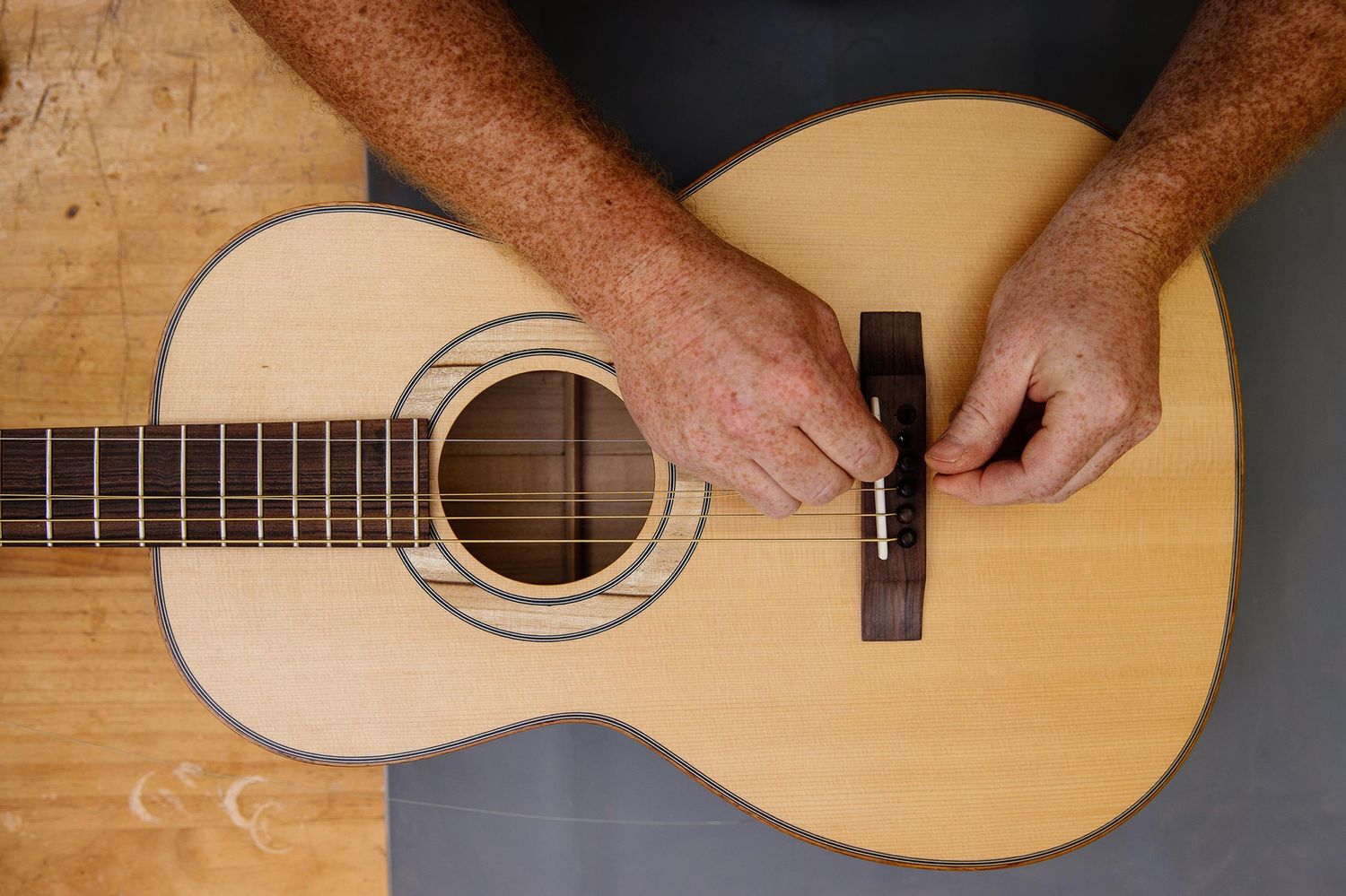Home>Production & Technology>Acoustic>What Are The Different Types Of Acoustic Guitars


Acoustic
What Are The Different Types Of Acoustic Guitars
Published: March 11, 2024
Discover the various types of acoustic guitars, including dreadnought, parlor, and jumbo, and find the perfect one for your musical style. Explore the differences and features of acoustic guitars to make an informed choice.
(Many of the links in this article redirect to a specific reviewed product. Your purchase of these products through affiliate links helps to generate commission for AudioLover.com, at no extra cost. Learn more)
Table of Contents
Introduction
Acoustic guitars are beloved for their warm, resonant tones and timeless appeal. They have been a staple of musical expression for centuries, captivating audiences with their rich sound and versatile capabilities. From intimate solo performances to lively jam sessions, acoustic guitars have a way of bringing people together through the power of music.
In this article, we will explore the diverse world of acoustic guitars, delving into the unique characteristics and playing styles associated with different types of acoustic guitars. Whether you are a seasoned guitarist or a curious enthusiast, understanding the distinctions between various acoustic guitar types can deepen your appreciation for this beloved instrument.
Each type of acoustic guitar possesses its own distinct sound, construction, and historical significance, making it essential for musicians to familiarize themselves with the nuances of each style. By gaining insight into the diverse array of acoustic guitars, players can make informed decisions when selecting an instrument that aligns with their musical preferences and playing techniques.
Join us on a captivating journey through the realm of acoustic guitars, where we will uncover the intricate details that define classical guitars, steel-string acoustic guitars, flamenco guitars, 12-string guitars, resonator guitars, parlor guitars, and jumbo guitars. From the elegant melodies of classical compositions to the vibrant strumming of folk and blues tunes, each type of acoustic guitar offers a distinct sonic palette that resonates with musicians and listeners alike.
Prepare to be immersed in the enchanting world of acoustic guitars as we unravel the unique characteristics and cultural significance of these timeless instruments. Whether you are drawn to the traditional allure of classical guitars or the bold resonance of jumbo guitars, there is a captivating journey awaiting you as we explore the diverse tapestry of acoustic guitar craftsmanship and musical expression.
Classical Guitars
Classical guitars, also known as nylon-string guitars, exude an air of elegance and sophistication. Renowned for their warm, mellow tones and delicate resonance, these instruments hold a revered place in the world of classical music and beyond. The hallmark feature of classical guitars is their utilization of nylon strings, which contribute to their distinctive sound and comfortable playability.
Crafted with meticulous attention to detail, classical guitars boast a timeless design characterized by a smaller body size and a flat fingerboard. The use of nylon strings, in contrast to the steel strings found on other acoustic guitars, results in a softer, more nuanced sound that is well-suited for intricate fingerpicking and melodic arpeggios. This gentle tonal quality lends itself beautifully to classical compositions, flamenco music, and intimate acoustic performances.
The construction of classical guitars often incorporates a solid wood top, typically made of cedar or spruce, which contributes to the instrument's warm and resonant sound. The back and sides are commonly crafted from mahogany, rosewood, or other tonewoods, further enhancing the guitar's tonal complexity and projection. Additionally, classical guitars feature a wider neck and lower string tension, facilitating comfortable fingerstyle playing and chord transitions.
In the realm of classical music, these guitars serve as the primary instrument for interpreting timeless compositions by renowned composers such as Fernando Sor, Francisco Tárrega, and Mauro Giuliani. The expressive capabilities of classical guitars enable musicians to convey emotive melodies and intricate harmonies with unparalleled grace and precision, captivating audiences with their evocative performances.
Beyond the classical genre, these guitars have found their way into contemporary music, enriching acoustic ensembles and singer-songwriter performances with their distinctive timbre and expressive potential. Whether evoking the romantic allure of Spanish serenades or adding a touch of refinement to modern arrangements, classical guitars continue to inspire musicians across diverse genres and cultural landscapes.
In essence, classical guitars stand as a testament to the enduring legacy of acoustic craftsmanship, embodying a tradition of artistry and musical expression that transcends generations. Their timeless allure and evocative sound make them a cherished companion for musicians seeking to channel their creativity and emotions through the enchanting resonance of nylon strings and finely crafted wood.
Steel-String Acoustic Guitars
Steel-string acoustic guitars, often referred to as "western" or "folk" guitars, embody a spirited resonance and versatile character that has made them a cornerstone of contemporary music. These guitars are distinguished by their utilization of steel strings, which produce a bright, vibrant sound that resonates with clarity and projection. Renowned for their adaptability across various musical genres, steel-string acoustic guitars have become synonymous with folk, country, rock, and pop music, captivating audiences with their dynamic tonal range and expressive potential.
Crafted with meticulous attention to detail, steel-string acoustic guitars feature a larger body size compared to classical guitars, providing enhanced volume and resonance. The top, commonly constructed from spruce or cedar, contributes to the guitar's rich tonal complexity and responsiveness, while the back and sides, often made of mahogany, rosewood, or maple, further enhance the instrument's sonic depth and projection.
The steel strings, known for their durability and bright tonal characteristics, imbue the guitar with a lively and articulate sound that is well-suited for strumming, flatpicking, and fingerstyle playing. This versatility allows musicians to explore a wide range of playing techniques and musical styles, from rhythmic chord progressions to intricate melodic passages, all while harnessing the instrument's vibrant acoustic presence.
In the realm of folk music, steel-string acoustic guitars have played an integral role in shaping the sonic landscape, accompanying poignant storytelling and evocative balladry with their resonant timbre and emotive resonance. From the heartfelt narratives of singer-songwriters to the spirited melodies of bluegrass and Americana, these guitars serve as a steadfast companion for musicians seeking to convey their stories and emotions through the power of acoustic instrumentation.
Furthermore, the enduring appeal of steel-string acoustic guitars extends into the realms of rock and pop music, where their dynamic sound and expressive potential have left an indelible mark on countless iconic recordings and live performances. Whether driving energetic rhythms or delivering soul-stirring solos, these guitars continue to captivate audiences with their vibrant tonal palette and unwavering presence on the musical stage.
In essence, steel-string acoustic guitars stand as a testament to the enduring legacy of acoustic craftsmanship, embodying a tradition of versatility and expressive potential that resonates with musicians and listeners alike. Their vibrant sound and dynamic character make them an indispensable instrument for those seeking to channel their creativity and emotions through the captivating resonance of steel strings and finely crafted wood.
Flamenco Guitars
Flamenco guitars, rooted in the passionate traditions of Spanish music and dance, embody a captivating blend of cultural heritage and artistic expression. Renowned for their percussive rhythms, fiery melodies, and evocative tonal nuances, flamenco guitars hold a revered place in the world of flamenco music, captivating audiences with their vibrant sound and expressive capabilities.
Crafted with meticulous attention to detail, flamenco guitars feature a distinctive construction tailored to meet the demands of traditional flamenco performance. The body of a flamenco guitar is typically lighter and thinner than that of a classical guitar, allowing for enhanced responsiveness and projection. This design facilitates the production of percussive tapping and rhythmic strumming, essential elements of flamenco music that contribute to its dynamic and expressive nature.
The top of a flamenco guitar is often crafted from spruce, a tonewood prized for its bright and articulate sound, which lends itself to the rapid, intricate strumming and percussive techniques characteristic of flamenco music. The back and sides, commonly made of cypress or sycamore, further contribute to the guitar's distinctive tonal palette, delivering a crisp, focused sound that resonates with clarity and presence.
In the realm of flamenco music, these guitars serve as the driving force behind the impassioned rhythms and soul-stirring melodies that define traditional flamenco performances. From the spirited footwork of flamenco dancers to the impassioned vocals of flamenco singers, the flamenco guitar provides a rhythmic and harmonic foundation that elevates the emotional intensity of the art form, captivating audiences with its evocative resonance and dynamic expressiveness.
Furthermore, the unique tonal characteristics of flamenco guitars, characterized by their percussive attack and rapid responsiveness, enable musicians to convey the intricate nuances of flamenco music with unparalleled precision and flair. Whether evoking the fervent energy of a traditional "tablao" performance or adding a touch of flamenco flair to contemporary compositions, flamenco guitars continue to inspire musicians across diverse genres and cultural landscapes.
In essence, flamenco guitars stand as a testament to the enduring legacy of acoustic craftsmanship, embodying a tradition of passion and artistic expression that resonates with musicians and listeners alike. Their vibrant sound and dynamic character make them an indispensable instrument for those seeking to channel their creativity and emotions through the captivating resonance of flamenco music and finely crafted wood.
12-String Guitars
12-string guitars, renowned for their lush, shimmering sound and captivating tonal depth, stand as a testament to the enchanting possibilities of acoustic instrumentation. These instruments, distinguished by their paired courses of strings, evoke a rich and resonant sonic tapestry that has left an indelible mark on countless musical compositions and performances.
Crafted with meticulous attention to detail, 12-string guitars feature a doubled string configuration, with each of the standard six strings paired with a thinner octave string. This unique arrangement imbues the guitar with a full-bodied and harmonically rich sound, characterized by its ethereal chime and expansive tonal presence. The doubled strings create a natural chorus effect, adding depth and dimension to chords and melodies, while infusing the music with a captivating sense of warmth and resonance.
The construction of 12-string guitars often incorporates a larger body size compared to traditional six-string guitars, providing enhanced volume and projection. The top, commonly crafted from spruce or cedar, contributes to the instrument's lush tonal complexity and responsiveness, while the back and sides, often made of mahogany, rosewood, or maple, further enhance the guitar's sonic depth and presence.
In the realm of folk, rock, and acoustic music, 12-string guitars have played a pivotal role in shaping the sonic landscape, enriching musical arrangements with their shimmering sound and evocative resonance. From the iconic jangle of 1960s folk-rock to the introspective balladry of contemporary singer-songwriters, these guitars have left an indelible mark on the fabric of popular music, captivating audiences with their ethereal timbre and immersive sonic textures.
Furthermore, the expressive potential of 12-string guitars extends into diverse musical genres, where their lush sound and harmonic richness have been embraced by musicians seeking to elevate their compositions and performances with a touch of sonic grandeur. Whether evoking the nostalgic allure of vintage folk tunes or adding a layer of sonic depth to modern recordings, 12-string guitars continue to inspire musicians across cultural landscapes and artistic expressions.
In essence, 12-string guitars stand as a testament to the enduring legacy of acoustic craftsmanship, embodying a tradition of lushness and harmonic richness that resonates with musicians and listeners alike. Their captivating sound and immersive character make them an indispensable instrument for those seeking to channel their creativity and emotions through the enchanting resonance of doubled strings and finely crafted wood.
Resonator Guitars
Resonator guitars, often referred to as "resophonic" or "dobro" guitars, exude a distinctive and evocative sound that has captivated musicians and audiences alike. Renowned for their resonant, metallic timbre and striking visual aesthetics, resonator guitars stand as a testament to the ingenuity of acoustic instrument design and the enduring allure of blues, bluegrass, and slide guitar traditions.
Crafted with meticulous attention to detail, resonator guitars feature a resonator cone or cones, typically made of spun aluminum or brass, which serve as the primary source of sound production. This innovative design diverges from the traditional soundboard found in acoustic guitars, allowing the resonator cone to act as a mechanical amplifier that projects the instrument's sound with exceptional volume and distinctive tonal characteristics.
The resonator cone is often accompanied by a distinctive metal cover plate, which not only protects the delicate internal components but also contributes to the guitar's iconic appearance. This resonator assembly, whether in the form of a single cone, tricone, or biscuit bridge design, imbues the instrument with a vibrant and metallic sound that resonates with clarity and presence, making it well-suited for slide guitar playing and blues-infused musical styles.
In the realm of blues and slide guitar, resonator guitars have played a pivotal role in shaping the sonic landscape, accompanying soulful vocals and emotive storytelling with their raw, expressive sound. From the haunting wails of bottleneck slide to the driving rhythms of Delta blues, these guitars serve as a conduit for impassioned musical expression, captivating listeners with their evocative timbre and dynamic resonance.
Furthermore, the enduring appeal of resonator guitars extends into the realms of bluegrass, folk, and Americana music, where their distinctive sound and visual allure have left an indelible mark on countless recordings and live performances. Whether evoking the soul-stirring melodies of traditional bluegrass tunes or adding a touch of vintage charm to contemporary arrangements, resonator guitars continue to inspire musicians across diverse genres and cultural landscapes.
In essence, resonator guitars stand as a testament to the enduring legacy of acoustic craftsmanship, embodying a tradition of innovation and sonic distinctiveness that resonates with musicians and listeners alike. Their resonant sound and striking appearance make them an indispensable instrument for those seeking to channel their creativity and emotions through the captivating resonance of resonator cones and finely crafted metalwork.
Parlor Guitars
Parlor guitars, often referred to as "parlour" guitars, evoke a sense of vintage charm and intimate musical allure that has enchanted musicians and enthusiasts for generations. These diminutive instruments, characterized by their compact size and distinctive tonal character, hold a revered place in the history of acoustic guitar craftsmanship, embodying a tradition of elegance and sonic richness that continues to captivate players and listeners alike.
Crafted with meticulous attention to detail, parlor guitars feature a smaller body size compared to standard acoustic guitars, providing a comfortable playing experience and a unique tonal footprint. The compact dimensions of parlor guitars contribute to their focused and articulate sound, delivering a balanced tonal response that is well-suited for fingerstyle playing, delicate arpeggios, and melodic accompaniment. This intimate sonic character makes parlor guitars an ideal choice for solo performances, recording sessions, and acoustic ensembles, where their distinctive voice can shine with clarity and presence.
The construction of parlor guitars often incorporates a solid wood top, typically made of spruce or mahogany, which contributes to the instrument's warm and responsive sound. The back and sides, commonly crafted from mahogany, rosewood, or maple, further enhance the guitar's tonal complexity and projection, imbuing the music with a captivating sense of warmth and resonance. Additionally, the shorter scale length and slimmer neck profile of parlor guitars offer a comfortable playing experience, making them well-suited for musicians seeking a nimble and expressive instrument.
In the realm of folk, blues, and acoustic music, parlor guitars have left an indelible mark on the sonic landscape, accompanying heartfelt vocals and evocative storytelling with their intimate and expressive sound. From the soulful laments of Delta blues to the introspective balladry of folk troubadours, these guitars serve as a conduit for emotive musical expression, captivating audiences with their nuanced timbre and intimate resonance.
Furthermore, the enduring appeal of parlor guitars extends into contemporary music, where their vintage charm and distinctive tonal character have been embraced by modern artists seeking to infuse their compositions with a touch of nostalgic allure. Whether evoking the timeless elegance of traditional folk tunes or adding a layer of intimacy to modern recordings, parlor guitars continue to inspire musicians across diverse genres and cultural landscapes.
In essence, parlor guitars stand as a testament to the enduring legacy of acoustic craftsmanship, embodying a tradition of intimacy and sonic richness that resonates with musicians and listeners alike. Their focused sound and vintage allure make them an indispensable instrument for those seeking to channel their creativity and emotions through the captivating resonance of finely crafted wood and timeless design.
Jumbo Guitars
Jumbo guitars, renowned for their commanding presence and robust tonal character, stand as a testament to the captivating possibilities of acoustic instrumentation. These instruments, distinguished by their large and curvaceous body design, evoke a rich and resonant sonic landscape that has left an indelible mark on countless musical compositions and performances.
Crafted with meticulous attention to detail, jumbo guitars feature a bold and expansive body size, providing enhanced volume and projection. The wide lower bout and deep body depth contribute to the guitar's powerful and resonant sound, delivering a robust tonal response that resonates with depth and clarity. The top, commonly crafted from spruce or cedar, contributes to the instrument's lush tonal complexity and responsiveness, while the back and sides, often made of maple, rosewood, or mahogany, further enhance the guitar's sonic depth and presence.
The distinctive tonal characteristics of jumbo guitars, characterized by their rich bass response and pronounced midrange, make them well-suited for a wide range of playing styles and musical genres. From bold strumming and rhythmic accompaniment to melodic fingerpicking and expressive lead lines, these guitars offer a versatile sonic palette that resonates with warmth and authority.
In the realm of folk, country, and rock music, jumbo guitars have played a pivotal role in shaping the sonic landscape, enriching musical arrangements with their bold and resonant sound. From the spirited rhythms of country ballads to the anthemic strumming of folk-rock classics, these guitars have left an indelible mark on the fabric of popular music, captivating audiences with their expansive tonal presence and immersive sonic textures.
Furthermore, the expressive potential of jumbo guitars extends into diverse musical genres, where their commanding sound and robust tonal character have been embraced by musicians seeking to elevate their compositions and performances with a touch of sonic grandeur. Whether evoking the nostalgic allure of vintage folk tunes or adding a layer of sonic depth to modern recordings, jumbo guitars continue to inspire musicians across cultural landscapes and artistic expressions.
In essence, jumbo guitars stand as a testament to the enduring legacy of acoustic craftsmanship, embodying a tradition of boldness and sonic richness that resonates with musicians and listeners alike. Their commanding sound and expansive character make them an indispensable instrument for those seeking to channel their creativity and emotions through the captivating resonance of finely crafted wood and timeless design.
Conclusion
In conclusion, the world of acoustic guitars is a rich tapestry of craftsmanship, tradition, and sonic diversity. From the elegant resonance of classical guitars to the commanding presence of jumbo guitars, each type of acoustic guitar offers a unique sonic palette and cultural significance that resonates with musicians and listeners across the globe.
Throughout this exploration, we have delved into the distinctive characteristics and historical significance of classical guitars, steel-string acoustic guitars, flamenco guitars, 12-string guitars, resonator guitars, parlor guitars, and jumbo guitars. Each type of acoustic guitar embodies a tradition of artistry and musical expression, serving as a conduit for creativity and emotional resonance.
Classical guitars, with their warm, mellow tones and nylon-string delicacy, evoke a sense of timeless elegance and sophistication, making them a cherished companion for classical compositions and intimate acoustic performances. Steel-string acoustic guitars, renowned for their vibrant sound and versatile character, have become synonymous with folk, country, rock, and pop music, captivating audiences with their dynamic tonal range and expressive potential.
Flamenco guitars, rooted in the passionate traditions of Spanish music and dance, embody a captivating blend of cultural heritage and artistic expression, captivating audiences with their percussive rhythms and evocative tonal nuances. 12-string guitars, with their lush, shimmering sound and captivating tonal depth, evoke a rich and resonant sonic tapestry that has left an indelible mark on countless musical compositions and performances.
Resonator guitars, with their resonant, metallic timbre and striking visual aesthetics, stand as a testament to the ingenuity of acoustic instrument design and the enduring allure of blues, bluegrass, and slide guitar traditions. Parlor guitars, with their vintage charm and intimate musical allure, have enchanted musicians and enthusiasts for generations, embodying a tradition of elegance and sonic richness that continues to captivate players and listeners alike.
Jumbo guitars, with their commanding presence and robust tonal character, stand as a testament to the captivating possibilities of acoustic instrumentation, offering a versatile sonic palette that resonates with warmth and authority.
In essence, the diverse array of acoustic guitars reflects the boundless creativity and expressive potential of musicians, serving as vessels for storytelling, emotional resonance, and cultural heritage. Whether evoking the soul-stirring melodies of traditional blues tunes or adding a layer of sonic depth to modern recordings, acoustic guitars continue to inspire musicians across diverse genres and cultural landscapes.
As we conclude this journey through the realm of acoustic guitars, may the timeless allure and evocative sound of these instruments continue to enrich the musical tapestry of our lives, transcending boundaries and uniting us through the universal language of music.











